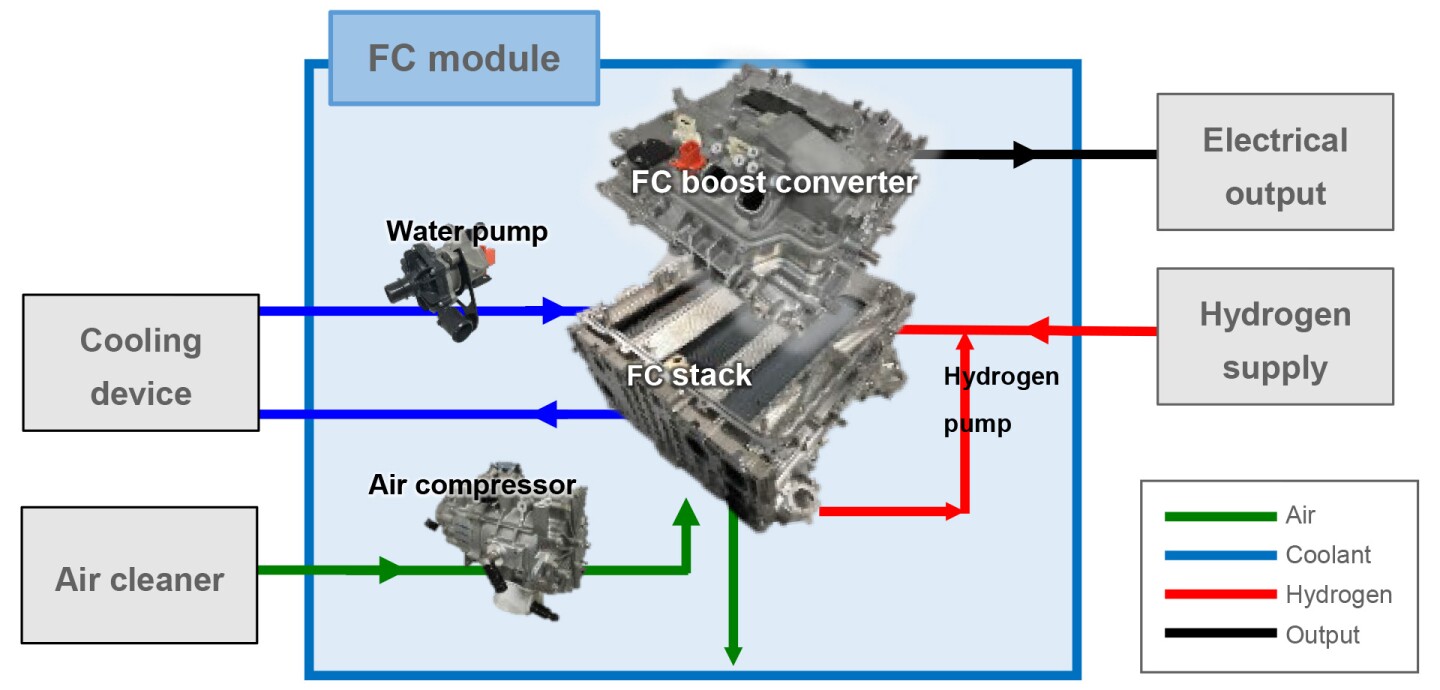Fuel cells generate electricity from hydrogen, so they’re a key part of the powertrain for hydrogen-powered electric vehicles and aircraft. But they can also be useful in a range of other applications, and in order to promote developments outside its own product lineup, Toyota has packaged up a fuel cell module you can buy more or less like a crate engine, ready to plumb into whatever device you’d like to power with hydrogen.

Toyota is heavily invested in hydrogen, as is Kia/Hyundai – a reflection of the Japanese and Korean governments’ commitments to working towards a hydrogen energy economy. As one of the only companies producing fuel cells at scale, it’s looking to provide a very easy way for other companies to buy and use its technology.
Thus, it’s announced its intention to manufacture “FC Modules” that can easily be integrated into cars, trucks, buses, trains, ships, stationary generators and any other suitable application.

Each module contains a fuel cell stack, boost converter, air compressor, hydrogen pump and water pump, wrapped up in a spiffy box. You’ll need to supply your own hydrogen tanks, as well as clean air and a cooling circuit. The output is a supply of electricity, operating at a range of voltages between 400 V and 750 V, which you can route to a buffer battery or run straight through a work circuit depending on what you’re doing.
Two shapes will be available: a “vertical” unit measuring 890 x 630 x 690 mm (35 x 24.8 x 27.2 inches) and weighing about 250 kg (551 lb), and a horizontal unit measuring 1,270 x 630 x 410 mm (50 x 24.8 x 16.1 inches) and weighing about 240 kg (529 lb). Each of these will be available in 60 and 80 kW versions, and Toyota claims they all offer “world-class, top level output density per unit volume” and “simple and infrequent” maintenance.
The modules can easily be combined to scale things up, and Toyota is more than willing to commit engineers to help companies design efficiently around them.
original story by By Loz Blain









